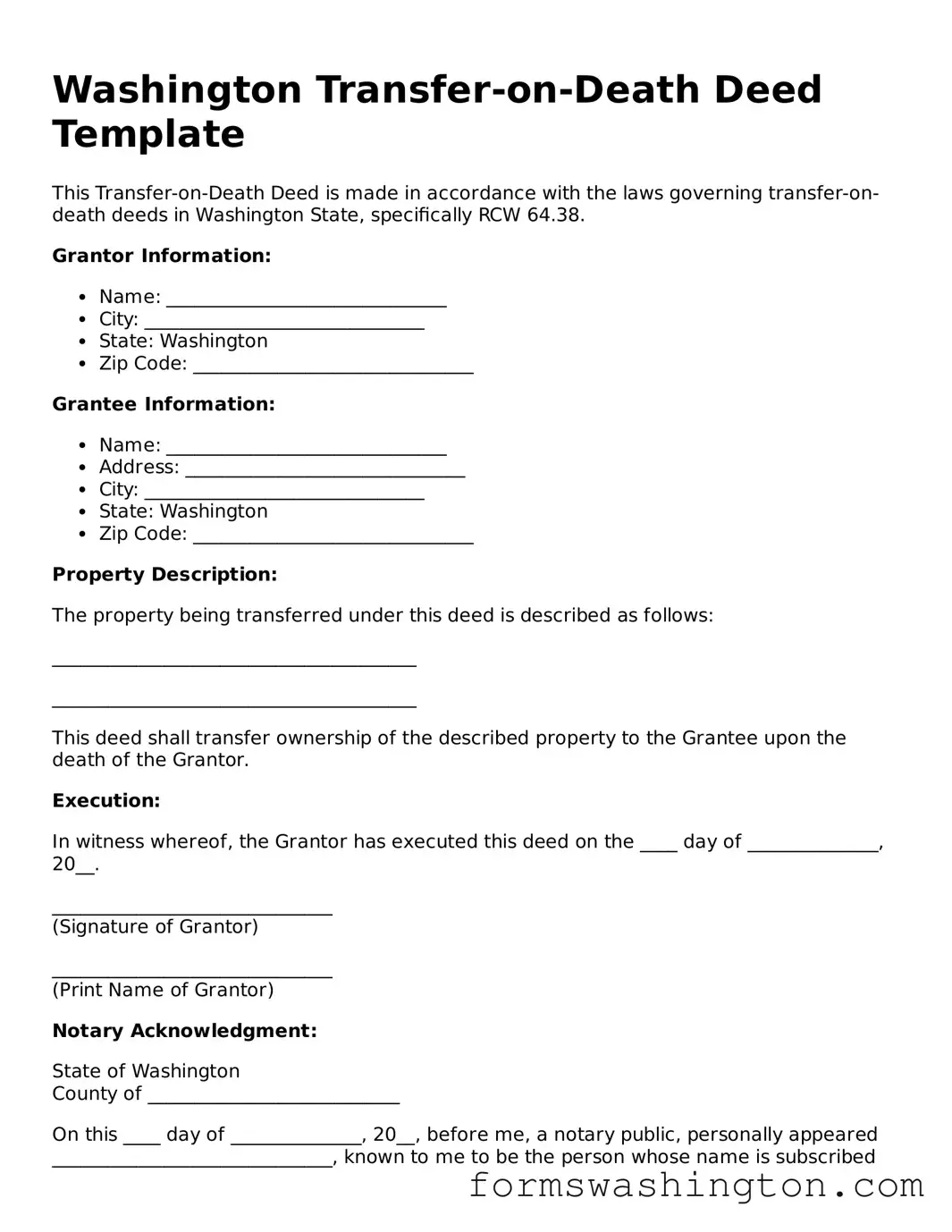The Washington Transfer-on-Death Deed form serves as a valuable tool for individuals looking to streamline the transfer of real property upon their passing. This legal instrument allows property owners to designate beneficiaries who will automatically receive the property without the need for probate. By completing this form, individuals can ensure that their real estate assets are transferred directly to their chosen heirs, thereby simplifying the process and potentially reducing associated costs. The form requires specific information, including the legal description of the property and the names of the beneficiaries, to ensure clarity and prevent disputes. Importantly, the Transfer-on-Death Deed can be revoked or altered at any time before the owner’s death, offering flexibility to adapt to changing circumstances. Additionally, it is essential for property owners to understand the implications of this deed, particularly regarding tax responsibilities and the rights of beneficiaries. Overall, the Washington Transfer-on-Death Deed form represents an efficient approach to estate planning, providing peace of mind for property owners and their loved ones.
